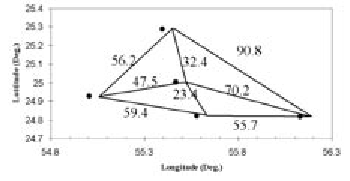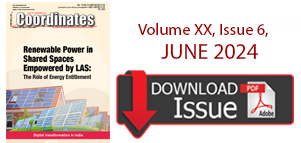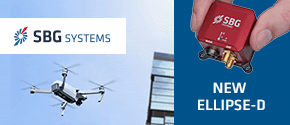Articles in the Articles Category

The Mix up of “X, Y, Z” Coordinates Between Photogrammetry and Geodesy
In Spatial considerations –
In geodesy, the “ZXY” coordinate system is “right-handed”, where the right thumb points towards the Z-axis, index finger towards the intersection of the Reference Meridian and Equatorial planes, and middle ?nger or the positive Y-axes, which is …

A case study of El Salvador City has been done using various photogrammetric techniques. This project comprised the complete new mapping of the town including all features like buildings, boulevards, roads,manhole/ drainage, light / telephone polls, trees /tree areas, ponds, river and streams (with break lines), Monuments, playground / Parks etc. The vectorization of the model has been done on Digital (Socket Set) and analytical systems both. From speed point of views digital systems are as good as analytical systems. It also depends on the skills / expertise of the Operator who is preparing the maps.

Interest in the use of Global Navigation Satellite Systems (GNSS) as a main source of navigation reference is increasing. The system employed for such a purpose should be capable of meeting the requirements of air navigation in terms of accuracy, availability, integrity, and reliability. At present, the accuracy requirements for all ?ight categories up to precision approach are summarized in Table 1. The accuracy requirement for Category I can be achieved most of the time using wide area differential systems such as the American “WAAS”, the European “EGNOS”, and the Japanese “MSAS”. The American Federal Aviation Authority (FAA) is developing a Local Area Augmentation System (LAAS) for categories II and III, involving the ?nal and precision approach phases of ?ight. The system includes at least four reference GPS receivers located at each airport, whereby GPS measurements are collected and processed in real time. The computed GPS differential corrections are sent to aircraft via a (VHF) radio link to calculate its location. LAAS preliminary test results have generally demonstrated accuracy of less than 1 meter. However, the percentage of system availability is still under evaluation. The cost of establishing LAAS for major airports is expected to be significant.

1. Spheroid is considered equivalent to an ellipsoid.
2. The longitude at the North or South Pole is zero degree.
3. The Mean Sea Level (MSL), a time-variant “average”, is
considered as time-invariant and time-independent.
4. The measured “dn” along a spirit level loop sum up to zero.
5. Imagine a freely ?owing ocean or sea channel under
a continent and it represents the Geoid.
6. The geoidal undulation or height (N) is equivalent to orthometric height (H).
7. There are “yours” and “mine” geoids. In other words every country has its
own geoid, creating a “political” boundary value problem for gravity.
8. When one has to re-observe at any station, it does not make any
difference so long one is observing within “few” meters.
9. If one asks for and gets a height as “123.4 m”. It is OK to add
zeros at the end, e.g., 123.4000, to make it more accurate.
A report on ION GNSS 2005, 13-16 September, Long Beach, USA
Recent …

Space environmental effects on satellite communication can be considered as related to space segment, ground segment and on the signals propagating through the earth’s lower and upper atmosphere. The atmospheric structure has significant influence on signal propagation. This has definite influence on the data processing methodologies. The specific applications with which are concerned here are …










 (5.00 out of 5)
(5.00 out of 5)